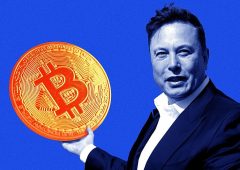Ripple CTO Outlines Broader Vision for XRPL Beyond Payments
05.06.2025 11:00 1 min. read Alexander Stefanov
Ripple’s David Schwartz has offered fresh insight into the evolving role of the XRP Ledger, signaling a shift from simple crypto transactions toward building a full-spectrum financial infrastructure.
In a string of recent posts, Schwartz suggested that Ripple’s tech stack is shaping up to resemble a decentralized financial system—capable of handling everything from payments to lending, investments, and tokenized assets.
He sees XRPL, together with XRP and stablecoins like RLUSD, as a platform poised to support the kinds of services typically handled by banks and fintech companies—only with greater speed and openness.
The ledger’s future, according to Schwartz, includes integrated markets, stablecoin ecosystems, and broader utility beyond just XRP.
That said, XRP still plays a foundational role. It remains the only asset native to the ledger with no counterparty risk, used to pay network fees and facilitate liquidity. Features like autobridging and pathfinding are still built around XRP, maintaining its centrality even as new tokens are introduced.
When it comes to quantifying XRP’s value tied to actual XRPL activity, Schwartz admitted it’s difficult to pinpoint. Still, the direction Ripple is heading is clear: building a decentralized financial platform with XRP at its core—but not its ceiling.
-
1
Dubai Approves First Tokenized Money Market Fund
08.07.2025 20:30 1 min. read -
2
Largest Bank in Hong Kong Explores Digital HKDollar in new project
10.07.2025 21:00 2 min. read -
3
Volkswagen Taps Solana-Based Service for Real-Time Robotaxi Navigation
09.07.2025 8:01 2 min. read -
4
Emirates to Integrate Crypto.com Pay in 2025: A New Era of Airline Payments
09.07.2025 15:08 2 min. read -
5
Alibaba Founder-Backed Ant Group to Integrate USDC Stablecoin
10.07.2025 13:30 2 min. read
Binance Introduces First Bonding Curve-based Token Launch With Four.Meme Collaboration
Binance has unveiled an innovative Token Generation Event (TGE) model powered by a bonding curve pricing mechanism, launching exclusively through Binance Wallet in collaboration with meme-centric project Four.Meme.
Largest Bank in Hong Kong Explores Digital HKDollar in new project
HSBC took a major step in digital currency innovation by concluding experimental trials under the HKMA’s Project e-HKD+.
Alibaba Founder-Backed Ant Group to Integrate USDC Stablecoin
Ant Group’s international arm, backed by Alibaba founder Jack Ma, is preparing to integrate Circle’s USDC stablecoin into its proprietary blockchain payment network.
Emirates to Integrate Crypto.com Pay in 2025: A New Era of Airline Payments
Emirates Airline has taken a bold step toward embracing digital finance by signing a Memorandum of Understanding (MoU) with leading cryptocurrency platform Crypto.com.
-
1
Dubai Approves First Tokenized Money Market Fund
08.07.2025 20:30 1 min. read -
2
Largest Bank in Hong Kong Explores Digital HKDollar in new project
10.07.2025 21:00 2 min. read -
3
Volkswagen Taps Solana-Based Service for Real-Time Robotaxi Navigation
09.07.2025 8:01 2 min. read -
4
Emirates to Integrate Crypto.com Pay in 2025: A New Era of Airline Payments
09.07.2025 15:08 2 min. read -
5
Alibaba Founder-Backed Ant Group to Integrate USDC Stablecoin
10.07.2025 13:30 2 min. read


